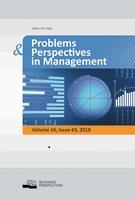A case study of global agency innovation rankings: implications on current definitions of innovation
A case study of global agency innovation rankings: implications on current definitions of innovation
Author(s): Lotfi Belkhir, Mary MathewSubject(s): Economy, Business Economy / Management
Published by: ТОВ “Консалтингово-видавнича компанія “Ділові перспективи”
Keywords: innovation management; innovation model; innovation momentum; innovation ranking; R&D spending;
Summary/Abstract: In this paper, the authors analyze global innovation rankings as provided by Strategy& over the last 7 years. They first explore the raw ranks and report variations in year-over-year (YOY) ranks for top ten ranking companies. The normalized innovation ranks are then used to calculate the Innovation Power (inP) to assess if these companies maintained or improved their ranks over time. An interesting classification of innovations for the top 10 emerges from this analysis. The constant top innovators were Apple and Google. The rising innovators were Tesla, 3M and Facebook. Other classifications are discussed. The authors propose a non-statistical predictive model, which is reminiscent of a kinematic model using a novel concept of Innovation Momentum (inM) and predict that for 2017, Apple and Google will hold their first and second place, followed by Amazon, Samsung and Tesla. Facebook is also expected to rise in its rank. Companies that reach out and serve end-user needs with service innovations appear rising in ranks, far more than R&D intensive patent filing innovators in these ranks. Tesla is an interesting top ranker to watch. There are implications for software focused companies gaining importance given their flexibility over hardware dominant ones. Some bottom innovators are further declining. Although the rankings are perception-based, there is a pattern that implies it is not random or merely subjective. The analysis highlights the need for leaders and consultants to put in perspective the complex management problem of measuring innovation.
Journal: Problems and Perspectives in Management
- Issue Year: 16/2018
- Issue No: 3
- Page Range: 269-284
- Page Count: 16
- Language: English

